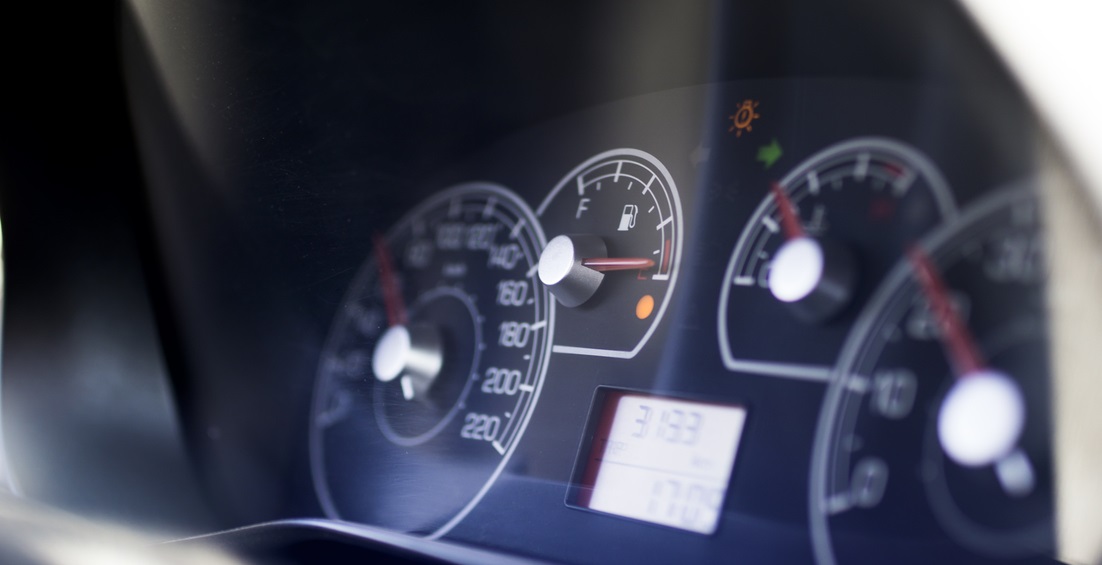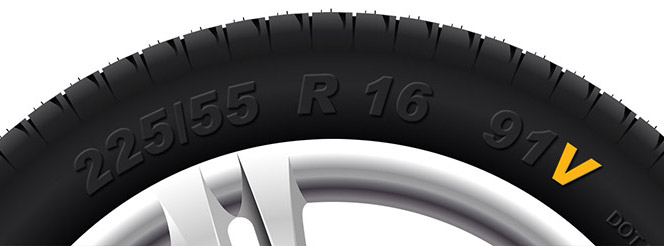What is a tyre pressure monitoring system?
Published on: Tuesday, 24 September 2019 | Author: Tyre Pros
Looking after your tyres is an essential part of car maintenance. Incorrectly inflated tyres pose multiple threats, from being more prone to blowouts that can cause you to lose control of your vehicle, to the prospect of severe loss of traction while cornering. While wear to your tyres is usually pretty visible and worsens over time, serious issues linked to your tyre pressure can strike at any time and may not be quite as noticeable.
A loss of pressure can also cause your tyres to wear down more quickly, as well as increase the amount of fuel your car burns through. A pressure drop of just 0.5 bar can increase fuel consumption by up to 5% due to increased rolling resistance. In turn, this can also result in your car being responsible for a higher level of CO2 emissions.
The tyre pressure monitoring system (TPMS) is an automatic monitoring tool, which is designed specifically to continuously measure the pressure of your car’s tyres, alerting the driver to any pressure-related issues. As of 2014. it is mandatory for TPMS to be fitted to all new cars sold in the EU. The correct maintenance of a car's TPMS was also added to MOT tests in January 2015.
To make sure you’re fully up to speed on TPMS, here are the answers to some of the most common queries.
How does TPMS work?
TPMS works directly with your vehicle’s main computer system in order to monitor the air pressure within each tyre. Sending back real-time updates in the form of tyre pressure readings, TPMS will alert the driver immediately to any tyre pressure issues through the use of a specific warning light transmitted directly to the driver’s dashboard. There are two slightly different types of tyre pressure monitoring system, direct TPMS and indirect TPMS.
Direct TPMS
Direct TPMS works by using pressure monitor sensors embedded specifically within each tyre. Recording pressure levels every few seconds, providing individual tyre temperature reports and measuring wheel revolution data, direct TPMS notifies the driver instantly if there are any notable abnormalities to any of these variables.
If the vehicle’s centralised computer system receives data from a TPMS sensor that air pressure has dropped below the recommended threshold specified by the manufacturer - usually a drop of 25% or higher - a TPMS warning light will appear on the driver’s dashboard, immediately alerting them to a potential tyre pressure issue. Direct TPMS has the advantage of being more accurate than its indirect equivalent, yet is the more expensive option for manufacturers.
Indirect TPMS
Unlike direct TPMS which is its own individual system, indirect TPMS works as part of your vehicle’s Antilock Braking System (ABS). Measuring the rate and speed of wheel revolution, indirect TPMS sensors record the size of a tyre and determine air pressure by detecting any significant change in their shape, as well as recording changes in the rolling resistance of each tyre. If a tyre’s air pressure is too low, it will roll at a different wheel speed to that of correctly inflated tyres. Indirect TPMS will notice this difference and inform your car’s computer system. As with direct TPMS, this irregularity will trigger a TPMS warning light on the dashboard and alert the driver to any tyre pressure issues. Compared to direct TPMS, Indirect TPMS is relatively inexpensive to install and maintain, but has the disadvantage of not being as reliable - particularly when tyres start to become worn.
Why is TPMS so important?
There are a number of important reasons for keeping an eye on your vehicle’s tyre pressure. From personal safety to vehicle efficiency, comfort of ride to your car’s longevity, here is why TPMS is such a vital feature of your car.
It goes without saying that the most important benefit of TPMS is the safety aspect. Incorrectly inflated tyres can lead to a range of dangerous problems including handling issues, a higher heat build up when driving and tyres that are likely to wear down more quickly. As a result, not keeping an eye on your tyre pressure and ignoring TPMS warning lights could lead to tyres becoming much more prone to blowouts. TPMS is first and foremost a safety feature that has the potential to save lives. Slashing the odds of tyre-related accidents, TPMS is a key component of the modern car.
In terms of efficiency, ensuring your tyre pressure is correct also helps you save money. Both under and over inflated tyres can lead to uneven wear and tear on your tyres, meaning they are more likely to need replacing sooner than usual. Incorrect tyre pressure can also impact upon your car’s fuel efficiency too. If your tyres are underinflated, more tread is coming in contact with the ground. This causes more friction and therefore more power (and fuel) is required for the car to drive itself forward. TPMS can prevent this by warning you when tyre pressure is too low, ensuring your tyres remain at the correct pressure and no additional fuel is needlessly used. Naturally, this also leads to your car producing less carbon dioxide, producing environment, as well as monetary, benefits.
Finally, TPMS also plays an important role in improving the ride of your car, which in turn could affect the longevity of your vehicle. For example, both steering and suspension can be directly impacted by tyre pressure. While it is true that shock absorbers are responsible for absorbing the force of big bumps when driving on rough terrain, tyres are also essential in absorbing shocks on a smaller scale. This makes your vehicle’s tyre pressure an important factor in ensuring a smooth ride. If the pressure is too low, too much rubber will be in contact with the ground, increasing fiction. This can lead to overheating and premature wear and tear. If tyre pressure is too high, on the other hand, less of the surface area touches the ground, meaning your car will bounce around as you drive. As a result, stopping distances and traction will suffer, making for an uncomfortable drive and a vehicle more prone to accidents.
Taking good care of your tyres is an essential part of car maintenance, and with the help of your vehicle’s TPMS, there really is no excuse for dangerous, incorrectly inflated tyres. With a full understanding of what TPMS is and how it works, keeping your tyres in good condition and staying safe on the roads should become that little bit easier.




